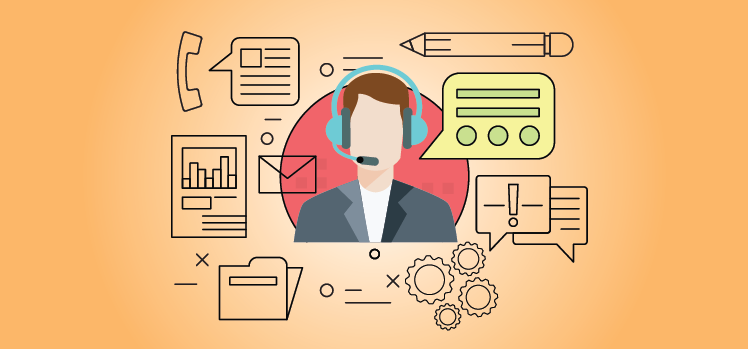How Customer Service Should Evolve with Automation
Harry Gordon Selfridge, John Wanamaker and Marshall Field were three prominent businessmen in the 1990s who originated the concept we know today as “customer-centricity”. The phrase “Right or wrong, the customer is always right” originated with them, becoming the most popular phrase in customer service.
Many accredit Field with this quote, but the three men all advocated for the customer to be set at the center of the equation, and that making them feel valued and appreciated is the cornerstone of entrepreneurship. The motto was popularized with them.
Established in Chicago, Marshall Field’s store used this motto as his slogan. The phrase also became popular with Harry Gordon Selfridge store, based out of the UK. The well-know phrase became synonymous with good business, making employees prioritize customer needs as the core aspect of their jobs.
Evolution of Customer Service
Let’s walk through the graphic for a quick summary of the history of customer service  As we see, the advent of the call center came in the 1960s, and the World Wide Web in 1989, with email and live chat support soon after in 1996. Every step we have taken, was a step closer to improving the customer experience. And if our job is to delight our customers, then we have to treat customer service as a key part of our business process.
As we see, the advent of the call center came in the 1960s, and the World Wide Web in 1989, with email and live chat support soon after in 1996. Every step we have taken, was a step closer to improving the customer experience. And if our job is to delight our customers, then we have to treat customer service as a key part of our business process.
In today’s digital world, the rules of customer service have changed. 76% of consumers say they view customer service as the true test of how much a company values them. In an effort to continue to acquire and retain customers, businesses need to acknowledge a paradigm shift. Forward-thinking businesses have already acknowledged it: The ‘Future of Customer Service’ is here.
The Future of Customer Service
“Customer service shouldn’t just be a department, it should be the entire company.” Tony Hsieh
Top performing businesses are adopting technology at a rapid pace. Sales and Marketing Automation has become the essential technology that works to remove the tedious, repetitive tasks of these two departments. From autoresponders, to auto dials and canned responses, the customer service industry is entering a new age. Social networks, the mobile and analytics are the future of technology; and when taken individually, they have major implications for customer service. When combined together, these digital trends create major opportunities for small business.
The adoption of technology has amplified the customer experience. The stakes are high when creating long-lasting relationships – and customer service is the critical link to business success; and will be in the future.
Let’s look at 3 common mistakes that can be avoided by enabling customer service to evolve with automation.
- Spamming the email box
The seemingly age-old question of how frequent or sporadic our messages should be sent to customers via email has been long debated. Short answer: The goal is to not end up in the spam folder. This is a common customer complaint that often results in emails never being opened. Amazon, for example, has found the happy medium. They send an email when a new book by an author we enjoy is available, or they find that we’ve been eyeing a TV and send us an email with the latest one on the market. Marketing and sales automation enables us to follow the customer journey, understand the needs of the customer, and target and swoop in at the most opportune time.
- Bringing on a sales rep too early
Overly aggressive sales reps put customers off. With marketing automation, it becomes possible to nurture leads until they become sales-ready, inadvertently, avoiding introducing the sales rep prematurely. Companies that excel at lead nurturing generate 50% more sales leads at 33% lower cost per lead. When customers have demonstrated that they are ready for a sales call, only then should we introduce them to a sales rep. Customer service should evolve with automation in order to avoid making the mistake of introducing a sales rep to customers before they are ready to make a purchase decision.
- Poor response time
75% of customers believe it takes too long to reach a live person. By automating routing and prioritization, marketing automation allows your service department to be proactive about responding. Waiting too long on the phone for customer service rep to answer ruins credibility and often results in lost sales.
The State of Customer Service
Today, good customer service is more important than ever. Forward-thinking small businesses know that it is a critical part of success, and will be even more critical in the future. Many customers have switched brands because of poor customer service. The future belongs to small businesses who employ automated technology to their customer service team. And with a platform that supports this team, and weaves in marketing and sales automation, these businesses are set to get ahead of the curve.
Is your customer service department effective at solving customer challenges? How effective are they? Are your customers satisfied?
Agile CRM has stepped up to meet the future of customer service. Perhaps it’s time you employ a platform that will help you delight your customers. Agile CRM will get you there.

No Comments